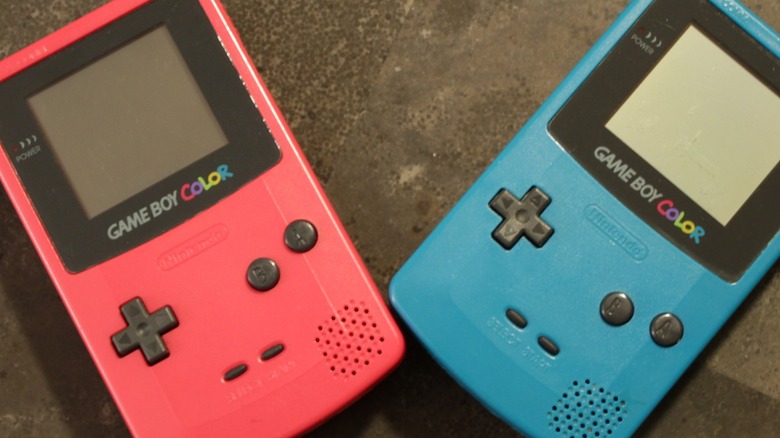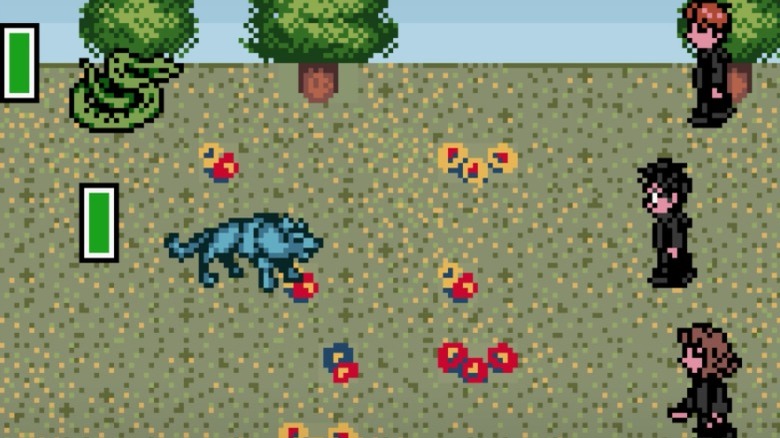The Last Game Boy Color Game Released In North America Was Tied To A Blockbuster Film
Despite lasting a third as long as the original Game Boy (per Pocket-lint), the Game Boy Color made a significant splash in its market tenure. Hits that have been remastered like "The Legend of Zelda: Link's Awakening," and the three "Pokémon" Game Boy Color games have remained fan favorites to this day. Outside of first-party titles, the movie industry cut out a slice of the pie as well. For example, Nintendo partnered with LucasArts and Disney Interactive to release "Star Wars Episode 1: Racer" and "Toy Story 2: Buzz Lightyear to the Rescue" respectively. One movie-based game even went down in history as the last official game for the Game Boy Color.
Of the premiere movie series kickstarted in the early 2000s, "Harry Potter and the Sorcerer's Stone" shattered records for its magical portrayal of the wizarding world and its characters. It became the number two highest-grossing movie ever at the time, earning $974.71 million in worldwide box office sales (per Forbes). Predictably, the success of this movie spun off into games. "Harry Potter and the Sorcerer's Stone" for Game Boy Color released to positive reviews (via GameFaqs), reimagining the first movie as a top-down RPG adventure. It also paved the way for what many fans consider the superior title: "Harry Potter and the Chamber of Secrets," the last official game for Game Boy Color.
Harry Potter and the Chamber of Secrets
Potter's second outing on the Game Boy Color arrived in November of 2002, the same year as the movie. Produced by Electronic Arts and developed by Griptonite Games, "Chamber of Secrets" played as a classic turn-style RPG a la the stunning "Final Fantasy" games. Visually and mechanically, the sequel borrowed from the established staples of "Sorcerer's Stone." Both games saw The Boy Who Lived explore the pixelated grounds of Hogwarts, encountering wizarding friends and enemies like animated toasters and suits of armor (via Longplay Universe). But the main reason to explore was the primary collectibles of the games: 101 Famous Witches and Wizards Cards. In addition to collectibility, the cards featured hidden combinations that could cast a variety of spells.
"Chamber of Secrets" mixed up the formula from its predecessor with new mini-games to play and the additions of Hermione and Ron as party members (per MobyGames); Harry flew solo in his first go-around.
These additions and more general tweaks put "Chamber of Secrets" ahead of its predecessor in terms of reviews, which sites like GameFaqs compiled. NODE Gamers also praised the title's huge improvement in gameplay, naming it the best "Chamber of Secrets" game among the various renditions released for PlayStation 1, GameCube, and so on.
About four months following "Harry Potter and the Chamber of Secrets," Nintendo cast Avada Kedavra on the Game Boy Color, leaving the Game Boy Advance SP to lead the handheld market alone, leaving us with several titles we hope make their way to the Switch.


